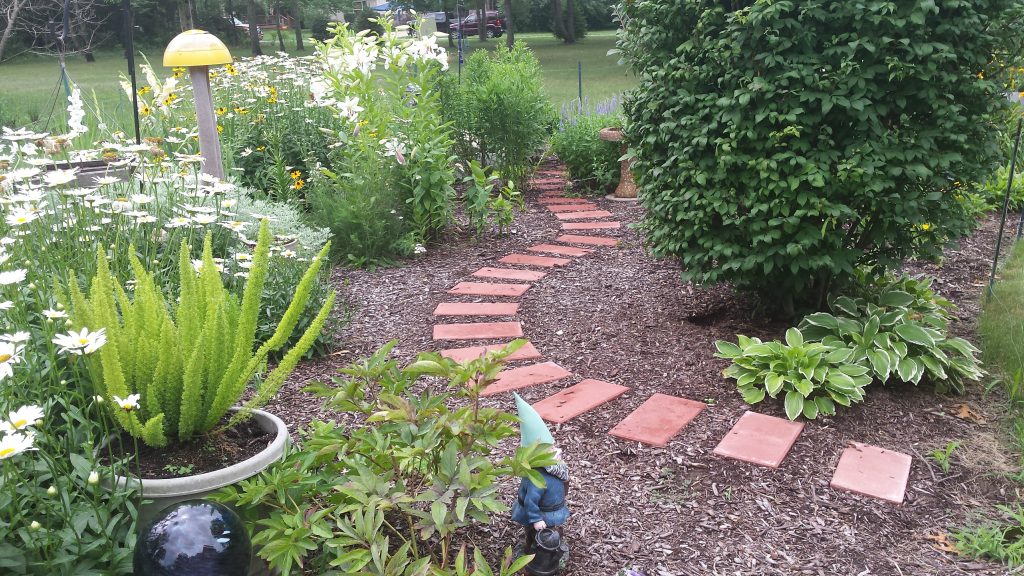I sat in the gray, dingy, basement classroom with two other volunteers in our matching red shirts and a group of detainees who were dressed in tan “scrubs” and Velcro sneakers. It was my turn to invite the men into the Centering Prayer practice and keep track of time. I struck the singing bowl three times, and each man closed his eyes and dropped into the silence.
Within moments, a powerful sense of peace descended on the room. For twenty minutes, I marinated in the deep stillness and tranquility. Occasionally, l glanced at my watch, looked around, and wondered: What is happening in each of the men? What is happening in me?
For those not familiar with Centering Prayer, it is a form of meditation in which one rests in the loving Presence that dwells deep within. Over time, it may have a transformative effect, providing more inner peace and clarity and less reactiveness. I like to think of it as a shock absorber to the bumps of life. It doesn’t get rid of the exterior challenges, but it has the potential to smooth out one’s reactions to them.
Of course, Centering Prayer isn’t the only contemplative practice. There are lots of forms of meditation and other practices such as sitting in nature, swimming, writing, walking, and gardening that may provide similar benefits.
Prior to this Centering Prayer class, I spent my weekend at a small retreat house. Initially, as I walked around the garden, I noticed that half of it was perfectly manicured. There wasn’t a weed in sight, and every plant was carefully trimmed to ensure that the brick path wasn’t obstructed. Even the outer edging had been painstakingly completed by hand. Those who preceded me were amazing gardeners!
The other half of the garden was overgrown and wild. I walked the path from the well-tended side until I could no longer see the bricks. They were completely covered with grass, weeds, and other debris. Where to begin?
The words, “Start here,” arose from within me, and I started to clear the remainder of the path. It wasn’t long before I uncovered one brick, then the next and the next. As I paused, it felt like both the garden and I were breathing more freely. I continued on, and eventually, the entire path was visible and walkable. This was exciting!
Throughout the weekend, I pulled weeds, dug up overgrown grass (sorry – no hand edging for me!) and removed invasive plants. I also cleared out lots of dead leaves, sticks and trash.
Eventually, I uncovered a mosaic of shiny tiles and immediately thought, “I’ve found treasure!” This was followed by the discovery of decorative rocks and a cute statue of a squirrel. I found an old bird house under a tangle of branches and placed it next to a tree. Later, as I returned to toss it, a tiny bird surprised me. It had already claimed it as its comfy, new home.
As I continued this process, I occasionally plopped down on the grass, stretched out and wondered: What is happening in this garden? What is happening in me?
In “Into the Silent Land: The Practice of Contemplation,” Martin Laud writes of a “hidden self” that resides deep within each of us. He states that “contemplative practice does not produce this hidden self but facilitates the falling away of all that obscures it.”
While gardening, I didn’t produce the brick path, shiny tiles, decorative rocks, cute squirrel statue or comfy bird house. Instead, I had the opportunity to witness the falling away of all that obscured the beautiful grounds. As I cleared the garden, is it possible that debris was also falling away in me?
This may sound like hard work, but it was so rewarding. Gardening is such a concrete process of removing weeds and grass, dead leaves, sticks and trash and discovering beautiful and tangible treasure.
Centering Prayer is a bit more mysterious. Intuitively, I know, trust and even feel that something is happening in the men as they meditate, but the treasure they discover in their daily lives isn’t immediately visible. Fortunately, they regularly share that Centering Prayer not only gives them a sense of peace during the class, but that it is helping them better respond to the chaos that they often experience back on their deck.
Thomas Keating, who was a key figure in the Centering Prayer movement, referred to Centering Prayer as “Divine therapy.” He taught that it helps uncover, loosen up and heal old emotional programs for happiness like the needs for control, affection and security as well as trauma.
Perhaps Centering Prayer may also be viewed as Divine gardening. During this contemplative practice and in the midst of daily activities, the weeds, grass, invasive plants, dead leaves, sticks and other debris may begin to fall away so that one’s true self is revealed.
I don’t know exactly what is happening in me as I engage in various contemplative practices, but I do plan to return to the jail to practice Centering Prayer and to the retreat house to garden. I also plan to return to Lake Michigan to open water swim, but that’s another story.
How about you? What is helping you find more peace and clarity and less reactivity amidst the challenges of your life and the chaos of the world? What debris is falling away? What treasures are you discovering?
With deepening peace,
Bridget
Copyright (c) 2024, Bridget Purdome, ThePearlDivers.com. All rights reserved.
